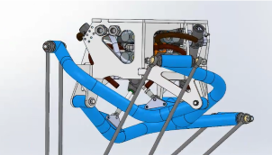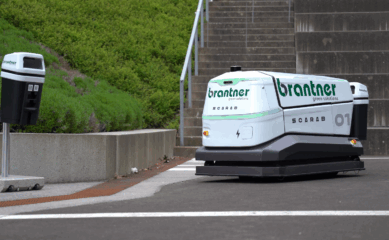Manipulation of elastic components
In many production processes, every millisecond counts. At the same time, high speeds when moving elastic components often lead to undesirable vibrations – with negative effects on cycle time, process stability and component load. In conventional robot control systems, the elastic properties of these components are usually not taken into account.
Suitable model-based approaches allow the tendency of moving objects to vibrate to be taken into account during trajectory planning, so that vibrations can be avoided even during highly dynamic manipulations. Using the example of a highly elastic beam, it is demonstrated how a low-vibration trajectory is generated and then automatically translated into control code for the robot. A standardized functional mock-up unit (FMU) can also be exported for virtual commissioning in order to test the control behavior in advance in a simulation environment.
This enables shorter cycle times, reduced vibrations and more efficient production.
Solution
- Modeling, simulation, virtual commissioning
- Trajectory planning with defined speed profile
- Code generation (FMU)
Results and benefits
- Fast movements without oscillations
- Less mechanical stress for the payload
- Increased throughput

Dipl.-Ing., Dr. Markus Schörgenhumer, BSc
Business Area Manager Mechanics & Control
Further reference projects

Robotics in the agricultural sector
Use of robotics in the agricultural sector Simulation, optimization and prototyping The agriculture of the future needs efficient, autonomous solutions…

Robot for pipe inspection
Robot for pipe inspection Autonomous inspection of tunnel drainage pipes Together with ÖBB-Infrastruktur AG, LCM GmbH is developing the Tunnel…

Autonomous waste disposal and sorting
Waste robots in public spaces LCM is working together with the company Brantner on an autonomous robot system that automatically…
